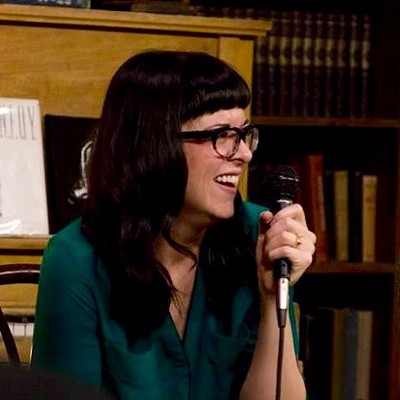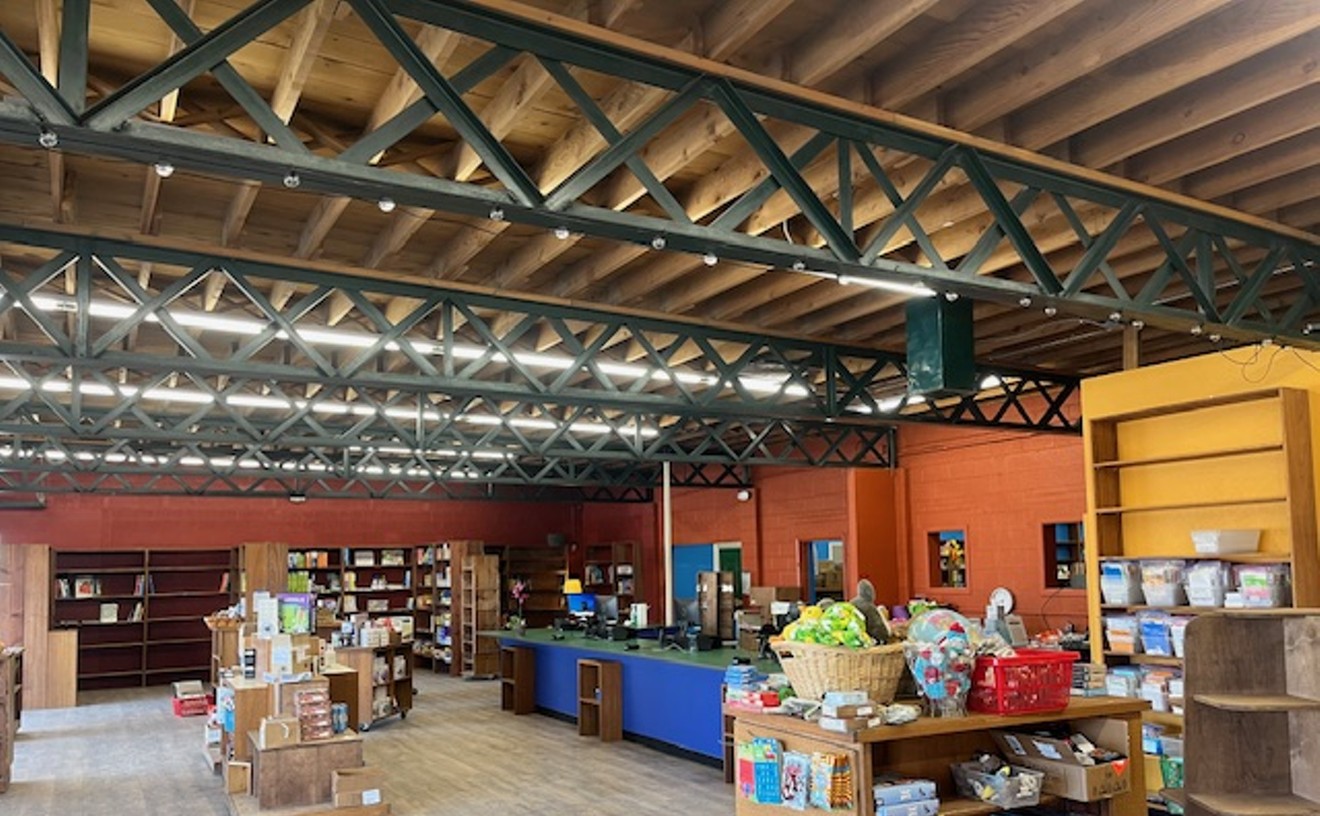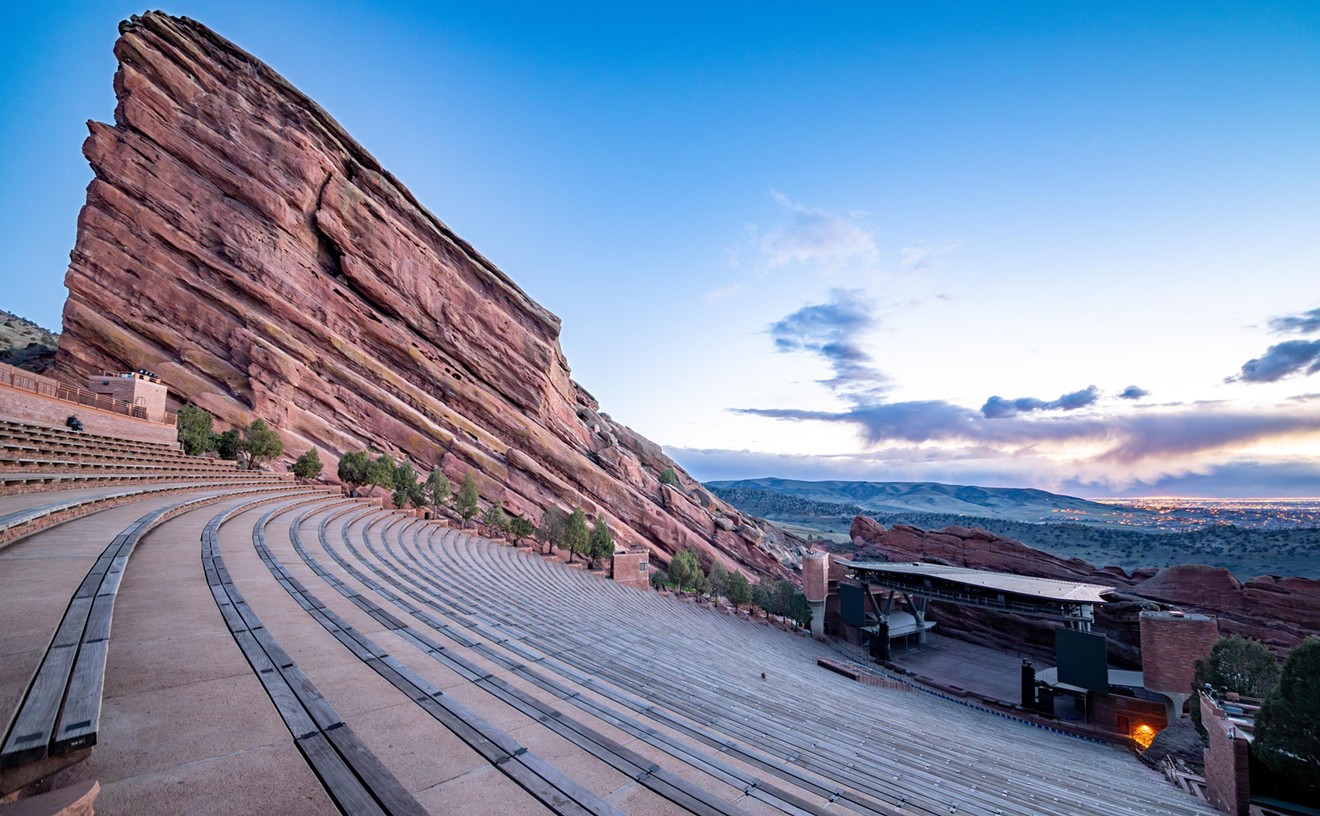Paddy Johnson has been on the cutting edge of online criticism since she launched Art F City in 2008. Tonight, pop-up exhibition space Black Cube hosts this art critic for the Internet era at RedLine, where she will discuss the history and evolution of GIF art — the animated-image format that was born on the web. Johnson’s look at GIF art starts with its inception in 1998 and follows the medium through a digital and technological revolution, tracing its role in social media and society. In advance of her appearance, Westword spoke with Johnson about the moving image and its impact on art in Internet times.
Westword: Animated GIF art is a massive medium used across platforms on the Internet. Can you talk a little bit about what you'll be covering in this talk?
Paddy Johnson: I will be outlining some of the history of GIF art to some extent. In the past, there was the influence of television in the '90s — it was very much focused on space exploration. A lot of the animated GIFs that you saw — like the Netscape Navigator animated GIF icon or the star GIFs that were very popular desktop backgrounds — those were very much influenced by the proliferation of space programs at the time. Star Trek: Deep Space Nine, Star Trek: Voyager, The X-Files — all of those things were going on. Outer space was really in our consciousness. We had begin to picture what the Internet was, and space was sort of a natural touchstone for people. Obviously, it has evolved significantly since then, but those are its roots.
That's interesting to look back on now — the idea that the Internet was truly visually akin to space exploration. Now it seems like the Internet looks like the world and popular culture —and vice versa.
I think now, artists would be hard-pressed to produce images of what the Internet as a whole looks like — I mean, it could be images of the world and warpy browsers and things like that. But there's not one sort of metaphor for the Internet that has a real presence in the same way.
A lot of GIF art feels hinged on aesthetics from popular culture's recent past that we know well. I don't want to say it's nostalgic, but the medium can certainly tap into good feelings about another era.
There was a term that was popular: net nostalgia. I think that was very popular, particularly within the years of about 2005 to 2010 or 2011. It's not quite as dominant now and, in fact, I think there has been a real shift recently. One of the shows I've been working on with my colleague Michael Anthony Farley is a show of animated GIFs that present fully realized environments — architectural spaces and alternate realities; cyberspace utopias and cyberpunk dystopias; personal escapes. All of those things are becoming much more present.
Yes! Visual spaces that you can navigate like a virtual exhibition — but the spaces are the created GIF art themselves.
Exactly. It's become a popular way to display GIFs, too. Rather than just placing GIFs in a column the way a blog might and having people sort of scroll down and view the GIFs that way — now you'll see virtual galleries that are rendered. You can go into a space and encounter different things. I think not very often they're GIFs themselves, but sometimes those spaces are. That's definitely something that has come out of the availability of free software that allows artists to render subjects in 3-D.
How do you feel social media has played a role in the proliferation of GIF art?
Social media has had a very large role in the development of GIF art, I think pretty much from the start. From 2003 to 2006, it was very popular to use bookmark software called Delicious. This was pre-Tumblr. People wanted to share things with each other, and the way people could do that was through this shared bookmarking device. They would mark links and then have a list of friends and a general feed, and everyone could see the GIFs they're making. They're able to share animated GIFs that way, but they're only able to share a link to the animated GIF; they're not able to just drop an image. There was a frustration amongst artists that they weren't able to share these images more directly. What happened was the emergence of surf blogs — those were group blogs, usually invite-only. Artists would share their GIFs and other things there. It's important to remember that GIFs are just like one-file format and an array of things that people might want to share.
From there, surf blogs kind of disappeared when there was less of a need for them. There are still some in existence, but a site like Tumblr replaced a lot of the need. One very interesting thing that happened was in 2010, Google introduced Google+. Google+ allowed artists to share GIFs of virtually any file size, and that was a big deal, because prior to that, artists were limited by social-sharing sites like Tumblr that had very small file-size restrictions, which explained the early prevalence of the Tumblr three-frames, which posted GIFs mainly from movies. They would include three frames of somebody doing X or Y. But through Google+, all of these artists who were making animated GIFs in an art context but were not able to show them suddenly were.
Then there were these new artists who sort of came out of the woodwork and started working in this way. It was a big deal, but it didn't last very long. On social networks, things change. Google+ didn't introduce Google+ for animated GIF artists. They had different plans. I think it was really only a year — some artists talk about it being a summer — that was incredible. But it had a huge effect and all of those artists are still connected now.
That seems to happen with social networks — they aren't always created for the community that ends up really utilizing them. MySpace was like that for music — it was a great place for bands but failed to capitalize on the need it was filling as a sort of makeshift website for musicians.
MySpace is very interesting, too, because of course it was overrun with GIFs. Part of Facebook's initial appeal was that it looked like an office space, right? It was clean and there was nothing amateur that was going to offend anyone's senses. Meanwhile, a lot of artists were using MySpace sort of semi-ironically. I think perhaps that wasn't a great era in animated GIFs. I do think that there are a lot of animated GIFs and pages that were really wonderful and came out of the MySpace era. But anything that sort of relies too much on an ironic appropriation of something, I'm a little suspicious of because it can come across as being condescending.
Paddy Johnson's talk, “The History of GIF Art,” begins at 6 p.m. Wednesday, October 14, at RedLine, 2350 Arapahoe Street. Admission is $10, or free for RedLine members; for more information or to purchase tickets, visit Black Cube's home or RedLine's website.
[
{
"name": "Air - MediumRectangle - Inline Content - Mobile Display Size",
"component": "12017618",
"insertPoint": "2",
"requiredCountToDisplay": "2"
},{
"name": "Editor Picks",
"component": "17242653",
"insertPoint": "4",
"requiredCountToDisplay": "1"
},{
"name": "Inline Links",
"component": "18838239",
"insertPoint": "8th",
"startingPoint": 8,
"requiredCountToDisplay": "7",
"maxInsertions": 25
},{
"name": "Air - MediumRectangle - Combo - Inline Content",
"component": "17261320",
"insertPoint": "8th",
"startingPoint": 8,
"requiredCountToDisplay": "7",
"maxInsertions": 25
},{
"name": "Inline Links",
"component": "18838239",
"insertPoint": "8th",
"startingPoint": 12,
"requiredCountToDisplay": "11",
"maxInsertions": 25
},{
"name": "Air - Leaderboard Tower - Combo - Inline Content",
"component": "17261321",
"insertPoint": "8th",
"startingPoint": 12,
"requiredCountToDisplay": "11",
"maxInsertions": 25
}
]











